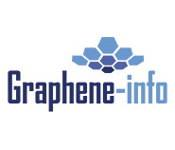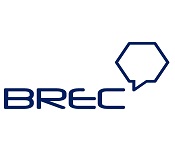Theme: Rising innovations of miracle materials
Graphene 2018
Conference Series LLC Ltd takes great pleasure and feels esteemed in welcoming the contributors over the globe to attend 2nd International Conference and Expo on Graphene & Semiconductors is to be held at Las Vegas, USA during April 16-17, 2018, which includes prompt keynote presentations, Oral Talks, Poster presentations, and Exhibitions.
The conference is organized around the theme: “Rising to new innovations in miracle materials”
Conference Series LLC Ltd organizes 3000+ Global Events with over 600+ Conferences, 1200+ Symposiums and 1200+ Workshops in USA, Europe & Asia with support from 1000 more scientific societies and publishes 700+ Open access journals which contain over 30000 eminent personalities, reputed scientists as editorial board members.
It will bring together world-class professors, researchers, scientists and students across the world to discuss the current developments that are taking place in the field of Graphene. Graphene & semiconductor are designed in such a way to provide diverse and current research that will provide an in-depth analysis in that field. The International Conference on Graphene and semiconductor is organized with a theme of “Rising to new innovations in miracle materials” with an objective to encourage young minds to overcome the challenges in the research field of Graphene materials by providing an opportunity to meet the experts.
-
Graphene Chemistry Eminent Scientists.
-
Biodegradable Graphene Professors.
-
Physics Junior/Senior Research Fellows.
-
Chemical Engineering Research Professors.
-
Directors of Graphene Companies.
-
Graphene and Material Science Engineers.
-
Graphene, Material Science Associations and Societies.
Track 1: Graphene and other 2D materials
Graphene is the first 2D material to be isolated. Graphene and other two-dimensional materials have a long list of unique properties which have made them a hot topic for intense scientific research and the development of technological applications. These also have huge potential on their right or in combination with graphene. The extraordinary physical properties of Graphene and other 2D materials is that they all can enhance the existing technologies and also create a range of new applications simultaneously. Pure Graphene has an exceptionally wide range of mechanical, thermal and electrical properties. Graphene can also greatly improve the thermal conductivity of a material by improving its heat dissipation property. In applications which require very high electrical conductivity, Graphene can either be used alone or as an additive with some other materials. Even at very low concentrations Graphene can greatly enhance the flow of electrical charge in a material. Graphene’s ability to store electrical energy at very high densities is exceptional. This attribute, added to its ability to rapidly charge and discharge, makes it ideal for energy storage applications.
Related Conferences: 15th Annual Congress on Materials Research and Technology, February 19-20, 2018, Paris, France, 7th International Conference on Smart Materials and Structures, March 26-27, 2018 New York, USA, 3rd Annual Conference and Expo on Biomaterials, March 05-06, 2018 Berlin, Germany, International Conference on Graphene and 2D materials, June 26-29, 2018, Dresden, Germany, International Conference on Two dimensional electronics beyond Graphene, June 3-8, 2018 Easton, Massachusetts, USA. American Chemical Society-Nanotechnology Safety Resources, Graphene Stakeholders Association (GSA)
Track 2: Novel Hybrid carbon materials
Large molecular building blocks required for hybrid materials, such as large inorganic clusters, may be of the nanometre length scale. The term hybrid material is more often used if the inorganic units are formed in situ by molecular precursors, for example applying sol–gel reactions. The biggest distinction between a Nano composite and a hybrid is that a hybrid material possesses a property that does not exist in either of the parent components. Graphene and single-walled carbon nanotubes are carbon materials that exhibit excellent electrical conductivities and large specific surface areas. An effective, economic way of using carbon fiber is to combine it with resin and another material, either a fiber or a metal, to produce a hybrid structure.
Related Conferences: 5th World Congress on Smart and Emerging Materials March 19-20, 2018 Bali, Indonesia, 16th International Conference on Emerging Materials and Nanotechnology Mar 22-23, 2018 London, UK, 7th International Conference on Smart Materials and Structures July 2-3, 2018 Vienna, Austria, International Conference on Compound Semiconductor Integrated Circuits and Technology Symposium October 14-17, 2018 San Diego, Canada USA, World Congress on Semiconductor Interface Specialists December 5-8,2018 San Diego, Canada USA, Brazilian Association for materials and metallurgy, Institute of Materials UK
Track 3: Graphene Synthesis
Synthesis of Graphene refers to any process involving fabrication of Graphene. Mechanical exfoliation is probably the technique to attain single and few layered Graphene products from natural graphite by repeated peeling/exfoliation. Chemical vapour deposition has techniques for making thin continuous films with thickness control in micro-electronics. Plasma enhanced chemical vapour deposition, synthesizing large area Graphene on copper foils using spin coated PMMA films. Graphene hetero-structures are synthesized on cobalt substrates by using the molecular beam epitaxial growth.
Related Conferences: 4th International Conference and Expo on Ceramics & Composite Materials May 14-15, 2018 Rome, Italy, 15th Annual Congress on Materials Research and Technology, February 19-20, 2018, 19th World Congress on Materials Science and Engineering June 11-13, 2018 Barcelona, Spain, International Conference on Material Research April 2-6, 2018 Phoenix, Arizona, International Conference on Silicon Carbide and Related Materials, November 26 - 27, 2018 Dubai, UAE, American physical Society , Nanotechnology Association (NIA)
Track 4: Large scale Graphene production and characterization
Epitaxial growth of Graphene is obtained on a 6H oriented SiC by vacuum heating and limiting the size of Sic substrates. Micro-chemical exfoliation of highly oriented pyrolytic graphite, that cannot be scaled to wafer-size dimensions. X-ray diffraction of high temperature annealed Ni films. Diffraction spectra were collected on the annealed Ni substrates over which Graphene films are typically synthesized. Graphene that is simply composed of the dissolution of glucose and in water, vaporization of water and calcination.
Related Conferences: 3rd Annual Conference and Expo on Biomaterials, March 05-06, 2018 Berlin, Germany , 2nd International Conference and Expo on Diamond, Graphite & Carbon Materials April 16-17, 2018 Lasvegas , USA,19th World Congress on Materials Science and Engineering June 11-13, 2018 Barcelona, Spain, International Symposium on Power Semiconductor Devices May 13-17, 2018 Chicago, USA, International Conference on Silicon Carbide and Related Materials, November 26 - 27, 2018 Dubai, UAE, American physical Society , Nanotechnology Association (NIA)
Track 5: Carbon nanotubes and Graphene
Graphenated Carbon Nanotubes are new hybrid that combines graphitic foliates grown with sidewalls of bamboo style CNTs. It has high surface are with 3D framework of CNTs coupled with high edge density of Graphene. Chemical modification of carbon nanotubes are covalent and non-covalent modifications due to their hydrophobic nature and improve adhesion to a bulk polymer through chemical attachment. Applications of the carbon nanotubes are composite fibre, cranks, baseball bats, Microscope probes, tissue engineering, energy storage, super capacitor etc. Nanotubes are categorized as single-walled and multi-walled nanotubes with related structures.
Related Conferences: 19th World Congress on Materials Science and Engineering June 11-13, 2018 Barcelona, Spain , 3rd Annual Conference and Expo on Biomaterials, March 05-06, 2018 Berlin, Germany ,16th International Conference on Emerging Materials and Nanotechnology Mar 22-23, 2018 London, UK , International Conference on Composites World Carbon Fiber, January 21-28, 2018 Charleston, South Carolina, International Conference and Expo on Ceramics June 11-15, 2018 Bleveland, Ohio, International Union Of Crystallography , International Material Research Society.
Track 6: Electrochemistry of diamond and Nano carbon materials
Carbon is an extraordinary element because of its ability to covalently bond with different orbital hybridizations. This leads to a rich variety of molecular structures that constitute the field of organic chemistry. For millennia, there were only two known substances of pure carbon atoms: graphite and diamond. The discovery of nanometre dimensional C60, and related fullerene-structures (C70, C84), spawned the field of Nano carbon research. The next major advance in carbon research was the discovery of carbon nanotubes (CNTs).The traditional electrochemical applications for carbon in solid electrode structures for the chlor-alkali industry as well as in aluminium refining are giving way to more diverse applications requiring high-surface-area carbon i.e., capacitor, fuel cells, metal/air batteries and high-energy lithium batteries. In all of these applications carbon has the desirable combination of acceptable electrical conductivity, chemical/electrochemical compatibility with the surrounding environment, and availability in the appropriate structure for fabrication into electrodes. In addition, the low cost of carbon relative to other electronic conductors is an important advantage for its widespread use in electrodes, particularly in electrochemical systems that must compete with existing technologies. Diamond electrodes are particularly attractive for electrochemistry. Because of its extraordinary chemical stability; diamond is a perspective electrode material to be used in electrochemistry and electrochemical engineering.
Related Conferences: 2nd International Conference and Expo on Diamond, Graphite & Carbon Materials April 16-17, 2018 Lasvegas, USA, 23rd International Conference on Nanomaterial’s and Nanotechnology March 15-16, 2018 London, UK, 15th Annual Congress on Materials Research and Technology, February 19-20, 2018, Paris, France, International Conference on Graphene and 2D materials, June 26-29, 2018, Dresden, Germany, International Conference on Two dimensional electronics beyond Graphene, June 3-8, 2018 Easton, Massachusetts, USA, American Association for advancement of science, ASME Nanotechnology Institute .
Track 7: Semiconductor materials and Nanostructures
By alloying multiple compounds, some semiconductor materials could be tuned resulting in ternary, quaternary compositions. Applications of semiconductor materials are found in optoelectronic, solar cells, Nano photonics, and quantum optics. Fabrication of cellulose Nano-structures by means of Nano Synthesis is a direct conversion of TMSC layers into cellulose through a Nano-sized focused electron beam as used in scanning electron microscopes.
Related Conferences: 24th World Nano Conference May 07-08, 2018 Rome, Italy, 2nd International Conference and Expo on Diamond, Graphite & Carbon Materials April 16-17, 2018 Lasvegas , USA , 19th World Congress on Materials Science and Engineering June 11-13, 2018 Barcelona, Spain, International Conference on GOCarbon fibre October 10-12 2017, Munich, Germany, International Conference and Expo on Advanced Ceramics & Composites March 6-8, 2018 Daytona Beach, Florida, Material Research Society ,Semiconductors Society Of India
Track 8: Graphene modification and functionalization
Chemical functionalization of Graphene enables the material to be processed by solvent assisted techniques, such as layer by layer assembly, spin coating and filtration. Hexagonal boron nitride is electrical insulator, combined with Graphene and other 2D materials to make hetero structured devices. The filed emitter by using multi layered Graphene nanostructure, the graphitic structure of pristine Graphene and carbon nanotube is the driving force behind their interaction .The combination of Graphene with carbon nanotubes leads to produce hybrids with increased electrical conductivity, mechanical properties and higher surface area.
Related Conferences: 15th Annual Congress on Materials Research and Technology, February 19-20, 2018, Paris, France, 3rd Annual Conference and Expo on Biomaterials, March 05-06, 2018 Berlin, Germany, 19th World Congress on Materials Science and Engineering June 11-13, 2018 Barcelona, Spain, International Conferences on Composites March 6-8, 2018 Paris, France, International Expo on Ceramics, May 1-3, 2018 Cleveland, OH, USA, American Chemical Society-Nanotechnology Safety Resources, Materials Research Society of Singapore.
Track 9: Carbon Materials in Energy
Carbon materials touch every aspect of our daily life in some way or the other. Regarding todays environmental challenges carbon may be the key elemental component, usually blended into notations such as “carbon cycle” or “carbon footprint”. Interestingly, not being used as “fossil fuel”, carbon materials also considerably contribute to the field of sustainable energy. They are central to most electrochemical energy-related applications, i.e. they also help to generate, store, transport and save energy. Nanostructured carbon is already used in fuel cells, conventional batteries and super capacitors. Electric double layer capacitors (EDLC, also called super capacitors) are energy storage devices based on the electrical adsorption of ions at the electrode/electrolyte interface (non-Faradaic process). Porous carbons are being used widely as electrode materials for super capacitors because of their higher specific surface area and relatively good electrical conductivity.
Related Conferences: 23rd International Conference on Nanomaterial’s and Nanotechnology March 15-16, 2018 London, UK, World Congress on Materials Science and Engineering June 11-13, 2018 Barcelona, Spain, 7th International Conference on Smart Materials and Structures, March 26-27, 2018 New York, USA, International Conference on Compound Semiconductor Integrated Circuits and Technology Symposium October 14-17, 2018 San Diego, Canada USA, World Congress on Semiconductor Interface Specialists December 5-8,2018 San Diego, Canada USA, Brazilian, International Associations of Nano Technology (IANT) , American Chemical Society(ACS)
Track 10: Nano Carbon Materials
Nano carbons are among the most promising materials developed in the past years. Nano carbon materials include fullerenes, carbon nanotubes (CNT), carbon nanofibers (CNF), nanodiamond, onions and various hybrid forms and 3D structures based on this structural principle. Nano carbon materials such as carbon nanotubes (CNT's) and Graphene have many extraordinary properties, such as a factor of 1000 times higher mobility and 10 times larger saturation velocity than Si. Several years ago these materials were available in milligram-scale quantities. Now many of them are produced in tonnes each year.
Related Conferences: 3rd Annual Conference and Expo on Biomaterials, March 05-06, 2018 Berlin, Germany, 24th World Nano Conference May 07-08, 2018 Rome, Italy, 16th International Conference on Emerging Materials and Nanotechnology Mar 22-23, 2018 London, UK, International Conference on Composites World Carbon Fiber, January 21-28, 2018 Charleston, South Carolina, International Conference and Expo on Ceramics June 11-15, 2018 Bleveland, Ohio, Semiconductor Research Corporation, Society for the advanced Of Material
Track 11: Applications of carbon nanotubes
Carbon nanotubes (CNTs) are cylinders of one or more layers of Graphene (lattice). Diameters of single-walled carbon nanotubes (SWNTs) and multi-walled carbon nanotubes (MWNTs) are typically 0.8 to 2 nm and 5 to 20 nm, respectively, although MWNT diameters can exceed 100 nm. CNT lengths range from less than 100 nm to 0.5 m. Individual CNT walls can be of metallic or semiconducting component depending on the orientation of the lattice with respect to the tube axis, which is called chirality. Carbon nanotube production exceeds several thousand tons per year, and are used for applications in energy storage, automotive parts, boat hulls, sporting goods, water filters, thin-film electronics, coatings, actuators and electromagnetic shields, health care and environmental protection.
Related Conferences: 5th World Congress on Smart and Emerging Materials March 19-20, 2018 Bali, Indonesia, 7th International Conference on Smart Materials and Structures July 2-3, 2018 Vienna, Austria, 23rd International Conference on Nanomaterial’s and Nanotechnology March 15-16, 2018 London, UK, International Conference on Silicon Carbide and Related Materials, November 26 - 27, 2018 Dubai, UAE, International Conference on Two dimensional electronics beyond Graphene, June 3-8, 2018 Easton, Massachusetts, USA, Austria Brazilian Association for materials and metallurgy , Institute of Materials UK
Track 12: Applications of graphene in Energy and Biomedicals
Graphene-enhanced lithium ion batteries could be used in higher energy usage applications now, like in smartphones, laptops and tablet PCs. Graphene has a great potential of being used at a low cost, flexible and highly efficient photovoltaic devices due to its excellent electron-transport properties and carrier mobility. Single or multi-layered Graphene, with less agglomeration, exhibit a higher effective surface area and better properties. In hydrogen storage, hydrogen plays an important role as energy carriers. As a fuel of choice, it is light weight, contains high energy density and emits no-harmful chemical by-products, therefore hydrogen is considered as a green energy. Graphene oxide has excellent characteristics as a nanomaterial for drug delivery. Using the fluorescence super-quenching ability of graphene, novel fluorescence resonance energy transfer biosensors could be developed. Cancer therapy is made by exploration of graphene in drug delivery by in vitro tests. For clinical cancer and other disease treatment, in vivo behaviour of graphene loaded with drugs is observed to be implemented.
Related Conferences:3rd Annual Conference and Expo on Biomaterials, March 05-06, 2018 Berlin, Germany, 19th World Congress on Materials Science and Engineering June 11-13, 2018 Barcelona, Spain, 2nd International Conference and Expo on Diamond, Graphite & Carbon Materials April 16-17, 2018 Lasvegas , USA , International Conference on GOCarbon fibre October 10-12 2017, Munich, Germany, International Conference and Expo on Advanced Ceramics & Composites March 6-8, 2018 Daytona Beach, Florida, American Nano society, Graphene Stakeholders Association (GSA)
Graphene & Semiconductors
(Theme: Rising new innovations of miracle materials)
Summary:
Graphene, the two-dimensional crystal of carbon, has many extraordinary properties and characteristics which are either unique or surpass those of other materials. The fundamental properties of Graphene are making it an attractive material for a wide variety of applications. The uptake of Graphene will be driven by confidence in its performance and progress in its production with properties appropriate for specific application. A semiconductor is a substance, usually a solid chemical element or compound that can conduct electricity under some conditions but not others, making it a good medium for the control of electrical current.
For more details please visit: http://graphene.conferenceseries.com/
Importance & Scope:
Graphene is the thinnest strongest material in nature. This element is important because it may function as conductors, semiconductors, as well as insulators. Fullerene, Graphene, and graphite are a few of the most important allotropes of carbon that exist in Nano scale dimensions, and all three have unique physical, material, and chemical properties. Electricity flows very quickly through the simple honeycomb sheet. Most conductors we encounter are metals, yet Graphene is based on carbon, a nonmetal. Semiconductor devices can be mainly used to display a range of useful properties such as passing current more easily in one direction than the other, showing variable resistance, and sensitivity to light or heat.Graphene-2017 covers the area of Graphene and Graphene oxide, Graphene like 2-D materials, production and forms of Graphene, Semiconductor materials, Semiconductor technologies, Emerging areas of semiconductors, Mechanics and behavior of Graphene and Semiconductors, Industrial Applications of Graphene and Semiconductor.
Why Las Vegas:
Las Vegas is the 28th most populated city in the state of Nevada is Las Vegas officially the City of LasVegas and often known simply as Vegas, and the county seat of Clark County. It is the largest city within the Greater Mojave Desert and the city anchors the Las Vegas Valley metropolitan area. Las Vegas is the 29th-most populated city in the United States and according to a 2013 estimate, the population is 603,488.
city tourist Attractions in Las Vegas is Fremont Street Experience, The Strip, Excalibur Hotel, Bellagio Resort and Fountain Show, Paris Hotel and the Eiffel Tower, Caesar’s Palace and The Colosseum, High Roller Ferris Wheel on the Link, MGM Grand Hotel and CSI: The Experience, Luxor Hotel, Stratosphere Tower, Vegas Indoor, Skydiving, Venetian Hotel and Gondola Ride, Mirage Hotel: Erupting Volcano and Secret Garden, Mandalay Bay and the Shark Reef Aquarium, Las Vegas Natural History Museum, Madame Tussaud, Helicopter Rides over Las Vegas and the Grand Canyon, New York-New York Hotel, Las Vegas Motor Speedway.
Las Vegas Monorail Las Vegas is a top three destination in the United States and it is a global leader in the hospitality industry and for business conventions. The city bills itself as The Entertainment Capital of the World, and is famous for its mega casino–hotels and associated activities and Las Vegas is an internationally renowned major resort city known primarily for its gambling, shopping, fine dining, entertainment, andnightlife and has made Las Vegas a popular setting for literature, films, television programs, and music videos and It is the leading financial, commercial, and cultural center for Nevada.
Why to attend???
Graphene providing a premier technical forum for reporting and learning about the latest research and development along with discussing new applications and technologies. It allows delegates to have issues addressed on Graphene by recognized global experts who are up to date with the latest developments in the field of Graphene and Semiconductors and provide information on new techniques and technologies. Meet Your Objective Business sector With individuals from and around the globe concentrated on finding out about Graphene and Semiconductor Conduct shows, disperse data, meet with current, make a sprinkle with another product offering, and get name acknowledgment at this occasion. Widely acclaimed speakers, the latest methods, strategies, and the most up to date overhauls in Graphene and Semiconductor, are signs of this meeting.
For more details visit here
Conference Highlights
- Graphene and other 2D materials
- Novel Hybrid carbon materials
- Graphene Synthesis
- Large scale Graphene production and characterization
- Carbon nanotubes and Graphene
- Electrochemistry of diamond and Nano carbon materials
- Semiconductor materials and Nanostructures
- Graphene modification and functionalization
- Carbon Materials in Energy
- Nano Carbon Materials
- Applications of carbon nanotubes
- Applications of graphene in Energy and Biomedicals
- Synthetic Graphite
- Graphene Vs Graphite
To share your views and research, please click here to register for the Conference.
To Collaborate Scientific Professionals around the World
| Conference Date | April 16-17, 2018 | ||
| Sponsors & Exhibitors |
|
||
| Speaker Opportunity Closed | Day 1 | Day 2 | |
| Poster Opportunity Closed | Click Here to View | ||
Useful Links
Special Issues
All accepted abstracts will be published in respective Our International Journals.
Abstracts will be provided with Digital Object Identifier by





















